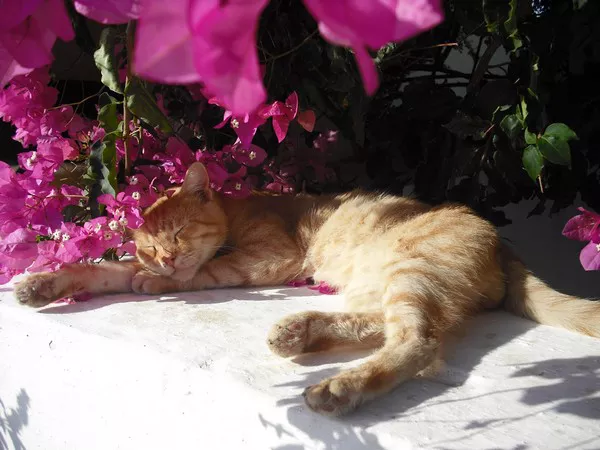For many cat owners, cuddling and holding their furry companions is a cherished part of the human-feline bond. However, not all cats readily enjoy being picked up or held, and some may even become anxious or distressed when lifted off the ground. Teaching your cat to enjoy being held requires patience, understanding, and gentle encouragement. In this comprehensive guide, we’ll explore effective strategies and techniques to help your cat feel more comfortable and secure in your arms, fostering a deeper connection and strengthening your relationship.
7 Ways To Teach Your Cat To Enjoy Being Held
1. Understanding Your Cat’s Body Language:
Before embarking on the journey to teach your cat to enjoy being held, it’s essential to understand feline body language and signals. Cats communicate through subtle cues, and their reactions can provide valuable insights into their comfort level and emotional state. Signs that your cat may be feeling stressed or uncomfortable include flattened ears, dilated pupils, tense body posture, and attempts to escape or wriggle out of your grasp. Conversely, relaxed body language, purring, and kneading with their paws indicate contentment and enjoyment.
2. Building Trust and Positive Associations:
Building trust is the foundation of teaching your cat to enjoy being held. Begin by creating a calm and comfortable environment, free from loud noises or sudden movements. Offer your cat plenty of positive reinforcement, such as verbal praise, gentle strokes, and tasty treats, to associate being held with pleasant experiences. Gradually introduce handling and touching exercises, starting with brief periods of contact and gradually increasing the duration as your cat becomes more comfortable. Use a soft, soothing voice and avoid forcing your cat to stay in your arms if they show signs of distress.
3. Desensitization and Gradual Exposure:
Desensitization involves exposing your cat to the sensation of being held in a gradual and controlled manner, allowing them to acclimate to the experience at their own pace. Start by gently lifting your cat a few inches off the ground and immediately lowering them back down, repeating this motion several times during each session. Use treats or a favorite toy to distract and reward your cat for remaining calm and relaxed. As your cat grows more accustomed to being lifted, gradually increase the height and duration of each hold, always monitoring their comfort level and adjusting accordingly.
4. Creating a Safe and Secure Environment:
Creating a safe and secure environment is essential for teaching your cat to enjoy being held. Ensure that your cat feels confident and supported by providing stable footing and a secure grip when lifting them. Use both hands to support your cat’s body, placing one hand under their chest and the other hand under their hindquarters. Avoid restraining your cat or holding them too tightly, as this can cause discomfort and anxiety. Additionally, choose a quiet and familiar location for holding sessions, such as a favorite chair or spot near a sunny window.
5. Positive Reinforcement and Rewards:
Positive reinforcement is a powerful tool for encouraging desired behaviors in cats. Whenever your cat willingly accepts being held or shows signs of relaxation, immediately reward them with verbal praise, gentle petting, or a special treat. By associating being held with positive experiences, your cat will learn to view this interaction as enjoyable and rewarding. Be patient and consistent in your training efforts, and celebrate each small success along the way. With time and patience, even the most reluctant cats can learn to enjoy being held.
6. Respecting Your Cat’s Boundaries:
It’s important to respect your cat’s boundaries and preferences throughout the training process. Pay attention to their body language and cues, and be responsive to their needs. If your cat shows signs of discomfort or resistance, such as growling, hissing, or struggling to escape, immediately release them and give them space. Pushing your cat beyond their comfort zone can erode trust and lead to further aversion to being held. Instead, focus on building a positive and trusting relationship based on mutual respect and understanding.
7. Seeking Professional Guidance:
If you encounter challenges or difficulties in teaching your cat to enjoy being held, don’t hesitate to seek professional guidance from a certified animal behaviorist or veterinarian. These professionals can provide personalized advice and support tailored to your cat’s individual needs and temperament. They can also help address any underlying behavioral issues or medical concerns that may be contributing to your cat’s reluctance to be held. With their expertise and guidance, you can develop a customized training plan to help your cat feel more comfortable and secure in your arms.
See Also: Do Siamese Cats Like to Be Held?
Conclusion:
Teaching your cat to enjoy being held is a rewarding journey that requires patience, understanding, and positive reinforcement. By respecting your cat’s boundaries, building trust through positive experiences, and gradually exposing them to the sensation of being held, you can help your feline companion feel more comfortable and secure in your arms. Remember to celebrate each small success along the way and seek professional guidance if needed. With time, patience, and love, you can strengthen the bond between you and your cat, creating a deeper and more fulfilling relationship for both of you.



























